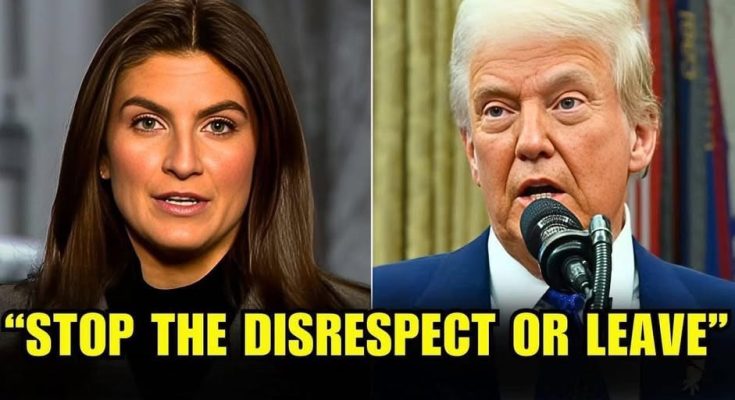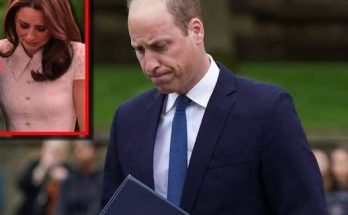During a heated Oval Office press conference, President Donald Trump engaged in a tense and combative exchange with CNN anchor Kaitlan Collins, accusing her of bias and questioning her credibility in front of a room full of reporters. The confrontation escalated quickly, dominating headlines and further fueling the ongoing battle between Trump and the media, particularly CNN.
The moment unfolded when Collins pressed Trump on whether he trusted Russian President Vladimir Putin. Given the longstanding controversies surrounding Trump’s relationship with Russia, the question was loaded, and Collins was determined to get a direct answer. Initially, Trump responded cautiously, saying, “I think he would like to see something happen.” However, his tone quickly shifted when Collins pushed for clarification.
Interrupting her mid-sentence, Trump turned the exchange into a personal attack. “I know he [Biden] is a friend of yours,” he said, implying that Collins was not an objective journalist but rather someone aligned with his political rival, Joe Biden. The accusation seemed to catch Collins off guard, but she attempted to stay on course, trying once again to steer the conversation back to the original question. Trump, however, was not finished.
“You always ask the same nasty questions,” he continued, waving his hand dismissively. “CNN has no credibility. Everyone knows you guys are fake news. You push lies and misinformation every day.”
Collins, known for her sharp questioning and refusal to back down, immediately fired back. “Mr. President, my job is to ask questions. You haven’t answered mine,” she said, undeterred by his attack.
Trump, visibly irritated, leaned forward and shot back, “You wouldn’t ask Biden these kinds of questions. You wouldn’t dare. You’re protecting him. You’re part of the problem.”
The room grew tense as reporters exchanged glances, sensing yet another dramatic clash between Trump and the media. It wasn’t the first time Trump had directly confronted Collins—she had previously been barred from a White House event in 2018 after persistently questioning him—but this moment was particularly heated, reflecting the heightened political stakes as the 2024 election cycle loomed.
Collins attempted once again to reassert her position, calmly stating, “Mr. President, I’m asking you about your stance on Putin, not about Joe Biden.”
But Trump wasn’t having it. “That’s exactly what I mean,” he said. “You pretend to be neutral, but you’re just here to attack me. I see what’s happening, and so does everyone else.”
At this point, other reporters in the room began murmuring. Some attempted to shift the focus back to policy questions, but Trump was still locked in on Collins. He then pivoted to his familiar attacks on CNN, calling the network “a disgrace” and suggesting that they were “losing viewers because people are tired of their lies.”
The back-and-forth between Trump and Collins continued for several minutes before a White House staffer intervened, trying to move on to another reporter. However, the confrontation had already made its impact. Within minutes, clips of the exchange flooded social media, with both Trump supporters and critics weighing in. His base applauded his takedown of what they saw as a “biased liberal journalist,” while media watchdogs and Trump’s detractors criticized him for his continued hostility toward the press.
CNN quickly responded to the clash, releasing a statement defending Collins. “Kaitlan Collins is a respected journalist whose job is to ask tough but fair questions of those in power. The American people deserve transparency and accountability, not baseless attacks on the free press.”
This latest encounter added another chapter to Trump’s long history of antagonism toward the media. Throughout his presidency and post-presidency, he had frequently clashed with journalists, often labeling unfavorable coverage as “fake news” and calling out specific reporters during press briefings. His tension with Collins, in particular, had been ongoing for years, as she had built a reputation for persistently challenging him during press conferences.
Political analysts noted that Trump’s exchange with Collins reflected a broader strategy. By directly attacking journalists and dismissing uncomfortable questions as partisan, he reinforced his narrative of being unfairly treated by the media—a tactic that resonated deeply with his supporters. His ability to turn press confrontations into rallying points had been a defining feature of his political career, and this instance was no different.
Meanwhile, Collins’ handling of the exchange was widely praised by fellow journalists, who saw it as an example of the press holding power to account despite difficult circumstances. Many reporters took to Twitter to voice their support, with some pointing out that Trump’s pattern of lashing out at female journalists—especially those who challenged him—was well-documented.
The confrontation also underscored the broader divide in America’s media landscape. Right-leaning outlets framed the moment as another example of Trump “fighting back” against “mainstream media corruption,” while left-leaning publications criticized him for once again trying to discredit legitimate journalism.
As the dust settled from the press conference, it became clear that the moment would have lasting implications. For Trump, it reinforced his standing with supporters who viewed the media as an adversary. For Collins, it was another test of resilience in a career spent navigating the rough waters of political journalism. And for the media landscape as a whole, it was yet another reminder of the deep divisions and contentious relationship between the press and the presidency in modern American politics.



